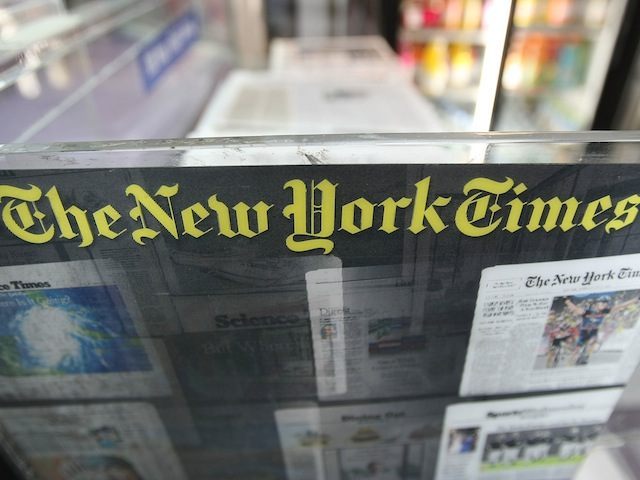Former Alaska governor and Republican vice-presidential nominee Sarah Palin filed a defamation lawsuit against the New York Times on Tuesday, after it claimed in a June 14 editorial that she had incited Jared Loughner to shoot Rep. Gabrielle Giffords (D-AZ) and kill six other people in January 2011.
(The editorial was published online on June 14, the day several Republicans were wounded in a mass shooting, but appeared in print the following day.)
It would normally be very difficult for Palin to win a defamation lawsuit simply because of a factual error. As a celebrity and a political leader, she falls under the tough standard first established by the Supreme Court (ironically) in New York Times Company v. Sullivan (1964), which is “actual malice.” In this context, “malice” does not refer to an emotion but to “reckless disregard for the truth” — that is, knowing something is false but printing it anyway.
In this case, the Times is indicted by its own reporting. Just days after Loughner’s shooting spree, the Times reported that he was mentally ill and had been focused on Giffords since 2007 — well before Palin became a national figure:
What the cacophony of facts do suggest is that Mr. Loughner is struggling with a profound mental illness (most likely paranoid schizophrenia, many psychiatrists say); that his recent years have been marked by stinging rejection — from his country’s military, his community college, his girlfriends and, perhaps, his father; that he, in turn, rejected American society, including its government, its currency, its language, even its math. Mr. Loughner once declared to his professor that the number 6 could be called 18.
…
He also may have felt rejected by the American government in general, and by Ms. Giffords in particular, with whom he had a brief — and, to him, unsatisfactory — encounter in 2007.
Therefore, the Times had reason to know that what it claimed in its editorial — that “the link to political incitement was clear” — was false. It went on to explain that Palin was responsible because her political action committee had circulated “a map of targeted electoral districts that put Ms. Giffords and 19 other Democrats under stylized cross hairs.” In fact — as the Times had to know, because it linked to an article by ABC News about the map — the “cross hairs” were above districts, not individual politicians. All of that likely amounts to actual malice under Sullivan.
The fact that the Times issued corrections — half-heartedly — would not affect its liability for defamation, but might affect the damages it would face as a result. Certainly Palin can claim that she has been damaged by the editorial: as she tweeted June 15, similar smears had significantly damaged her reputation and perhaps her political aspirations.
Palin’s complaint does not specify damages, but does ask for a jury trial, and a jury — even in New York, where the lawsuit was filed — might be very sympathetic to her claims, in an age when journalists are loathed even on the left.
The Times‘ only possible defense would be that the editorial page is devoted to opinion, not factual reporting. The courts give more leeway to statements in opinion articles because a reasonable reader might take them with a grain of salt. Yet that would force the Times into arguing that the facts on its editorial page — which it takes very seriously — should not be regarded as such. Essentially, the Times would have to that claim its editorials are “fake news.”
On Tuesday, the Times vowed to defend against Palin’s lawsuit “vigorously.” That could be a very costly approach, not only in monetary terms but in terms of the Times‘ reputation. It would also allow the Times‘ conservative critics to shine a spotlight — for the months or years that a trial would take — on allegations that it practices “fake news.”
Better to offer Palin an apology, a full retraction, and generous compensation. The Times really has no defense.
Joel B. Pollak is Senior Editor-at-Large at Breitbart News. He was named one of the “most influential” people in news media in 2016. He is the co-author of How Trump Won: The Inside Story of a Revolution, is available from Regnery. Follow him on Twitter at @joelpollak.

COMMENTS
Please let us know if you're having issues with commenting.